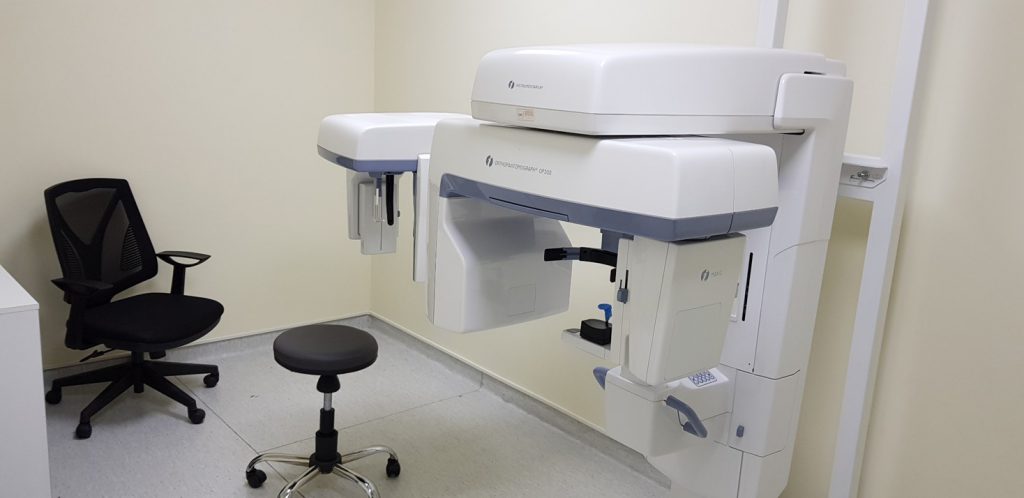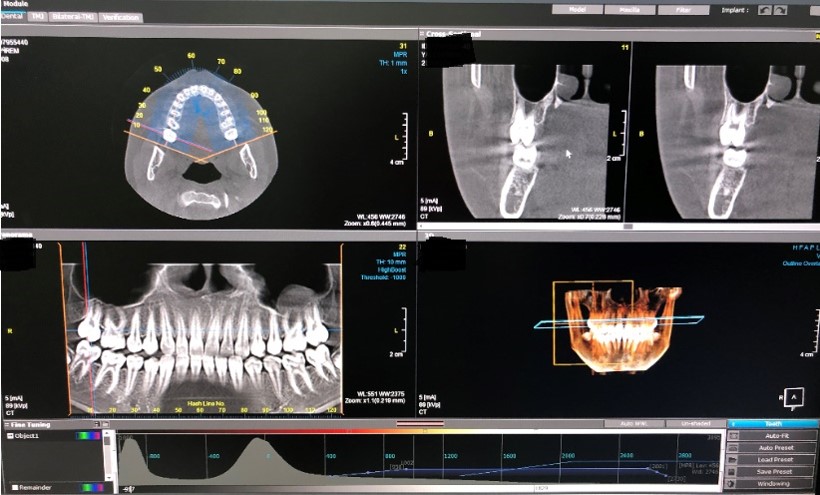Dental Tomography (dental tomography) What is it?
Dental tomography is a radiological method in which a cross-sectional image of the area to be examined is obtained using x-rays. It provides clearer, detailed and volumetric imaging. The most important difference from the classical dental x-ray is that dental tomography provides a 3D image. This allows three-dimensional imaging, including length, width and depth, to see around all teeth, jawbone and airway. Dental tomography is a guide in planning the diagnosis and treatment of various dental diseases. In addition, shots can be taken to evaluate the jaw joint (temporomandibular joint).
Who Is Dental Tomography Used For?
Patients with pain, lesion, trauma, fracture in the jaw area, patients in need of bone graft requiring root canal treatment, dental implant planning and removal, cases requiring operation in the evaluation of impacted or displaced teeth, cleft palate patients, situations requiring surgical guidance, important anatomical markers It is used in pre- and post-operative imaging of structures and structures, determining the distances to the mandibular canal or the sinus floor, measurement, configuration and appearance of root canals, apical periodontitis, jaw cysts, imaging of the jaw joint (temporomandibular joint) and planning surgery in patients who will undergo prosthesis.
Is there radiation in dental CT?
Dental CT uses low dose radiation. After the scan, there is no radiation left in the patient’s body.
Why is Dental Tomography Important and Necessary?
It helps to perform successful dental implant surgery by showing the exact shape and dimensions of the jawbone. If there is an infection, it allows us to see its exact location; It can give clear information about whether a tooth is broken or what can be done to help it heal. We can diagnose severe bone cancers, tumors, and abnormal lesions that indicate cysts.
What are the Advantages of Dental Tomography?
It provides three-dimensional view with better image quality and higher accuracy. A clear image of bone and soft tissues is obtained. Unlike traditional dental x-rays, both bone and soft tissue can be easily scanned with Dental CT. Dental CT provides a more accurate diagnosis and the chance to create a precise treatment plan. A comprehensive view of the patient’s mouth and teeth is obtained. Each scan produces sections that the dentist can manipulate by manipulating the contrast, and volumetric data that can be viewed from different angles. Dental tomography offers a non-invasive and painless solution.


***In our department, we provide service with 2018 model INSTRUMENTARIUM ORTHOPANTOMOGRAPH OP300 Volumetric Dental (Dental) CT.
